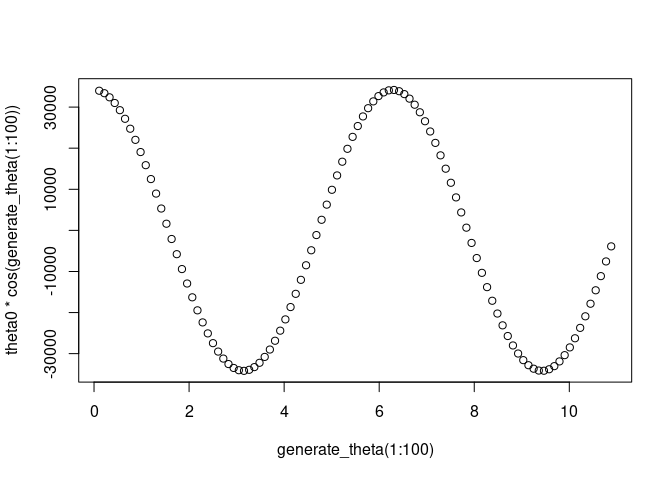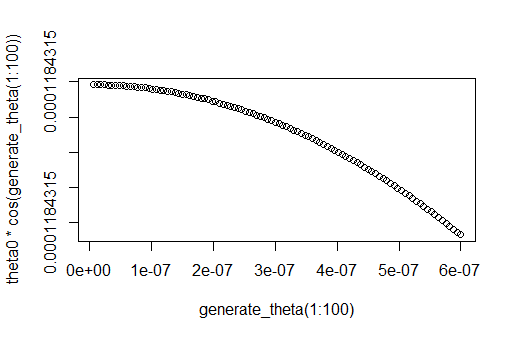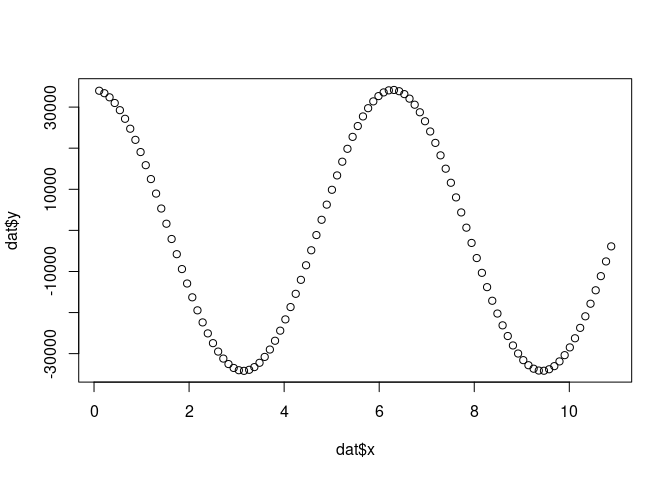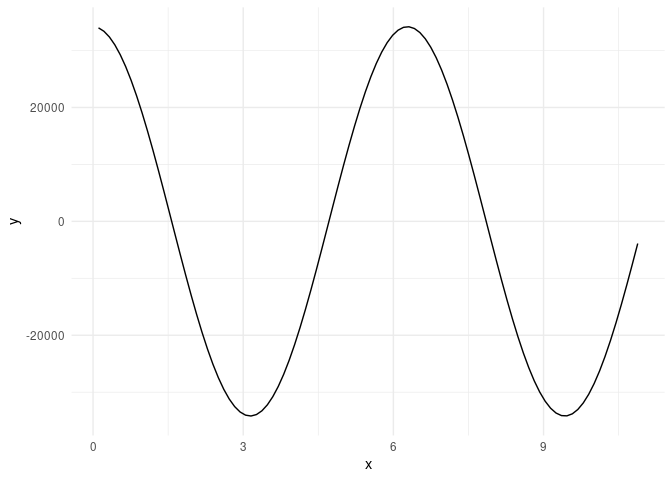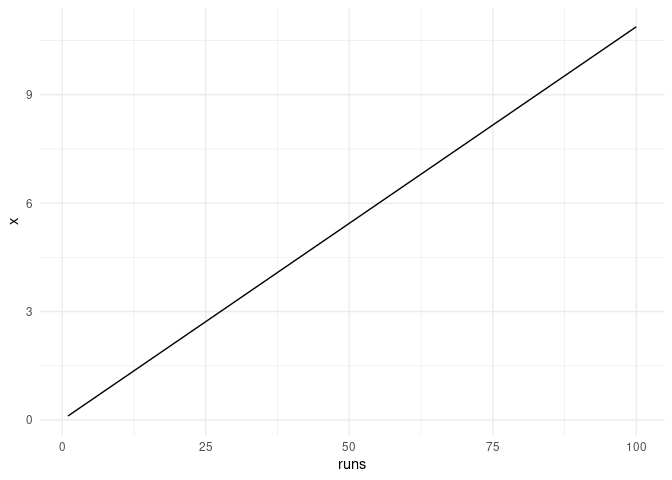Hi I am currently tackling on how to find points of intersection on R studio, including a plot of the functions on the same plot. As you can see I have wrote out the constants and the simultaneous equation that needs to be solved to find theta, in order to find the value for 'k' and struggling on how to attempt this. Any help would be much appreciated!
#Constants given10^(-8) 10^(-19)232 10^(-3)10^(-31) 10^(-34))/(2*pi)
me<-0.0679.109 10^(-31)9.109 10^(-31)
#Equation for theta (unknown value is k)L)/2 (u0)(L^(2)))/(2 (hbar^(2))))
#Simultaneous equations to solve
See the FAQ: How to do a minimal reproducible example reprex for beginners . Could you reframe the question along the following lines?
# constants
L <- 1.210^(-8)
u0 <- 1.610^(-19) * 23210^(-3)
m_star <- 9.10910^(-31)
hbar <- (6.6310^(-34)) / (2 * pi)
me <- 0.0679 * 10910^(-31)
mh <- 0.59 * 10910^(-31)
theta0 <- sqrt(((m_star) * (u0) * (L^(2))) / (2 * (hbar^(2))))
generate_theta <- function(k) (k*L)/2
plot(generate_theta(1:100),theta0*cos(generate_theta(1:100)))
Hi, from generating the two functions I will need to find where y=theta and y=theta0*cos(theta)
Also, some of the constants keep messing up when I post it here ill give you the list.
there should be a '*' in between 1.2 and 10 for L, 1.6 and 10 for u0, 9.109 and 10 for m_star
the equation for theta0, ''me'' should replace ''m_star''
the plot came out as below without changing any of the code you have wrote
Similarly I need to almost create a graph like this
**
Freeplex:
he constants
Cut, paste into your answer and edit this as required
L <- 1.210^(-8)
u0 <- 1.610^(-19) * 23210^(-3)
m_star <- 9.10910^(-31)
hbar <- (6.6310^(-34)) / (2 * pi)
me <- 0.0679 * 10910^(-31)
mh <- 0.59 * 10910^(-31)
theta0 <- sqrt(((m_star) * (u0) * (L^(2))) / (2 * (hbar^(2))))
Then m_star is not used?
You should recheck, cutting and pasting the code.
Freeplex:
create a graph like this
With the data, this will be difficult because the axes differ by 44 orders or magnitude
suppressPackageStartupMessages({
library(ggplot2)
})
# constants
L <- 1.210^(-8)
u0 <- 1.610^(-19) * 23210^(-3)
m_star <- 9.10910^(-31)
hbar <- (6.6310^(-34)) / (2 * pi)
me <- 0.0679 * 10910^(-31)
mh <- 0.59 * 10910^(-31)
theta0 <- sqrt(((m_star) * (u0) * (L^(2))) / (2 * (hbar^(2))))
generate_theta <- function(k) (k*L)/2
runs <- seq(1,100)
dat <- data.frame(x = generate_theta(runs),y = theta0*cos(generate_theta(runs)))
plot(dat$x,dat$y)
p <- ggplot(dat)
p + geom_line(aes(x,y)) +
theme_minimal()
p + geom_line(aes(runs,x)) +
theme_minimal()
